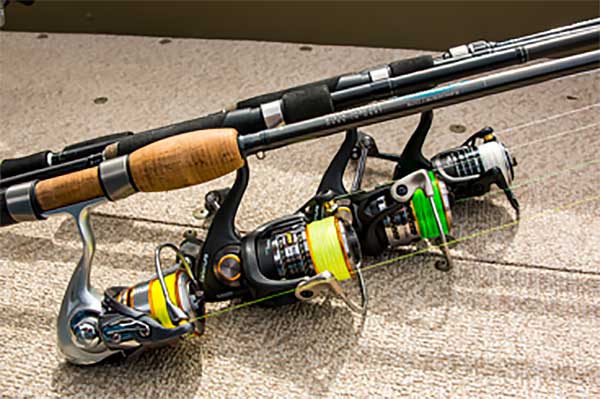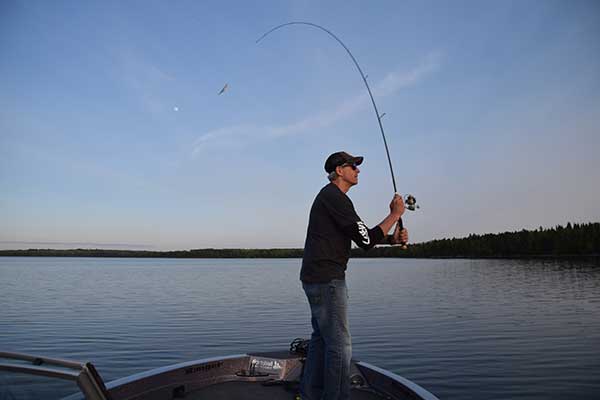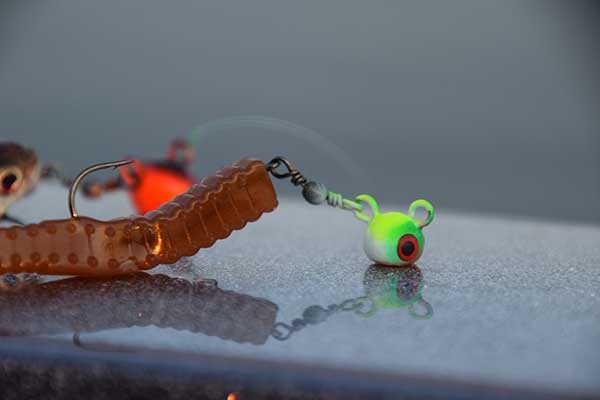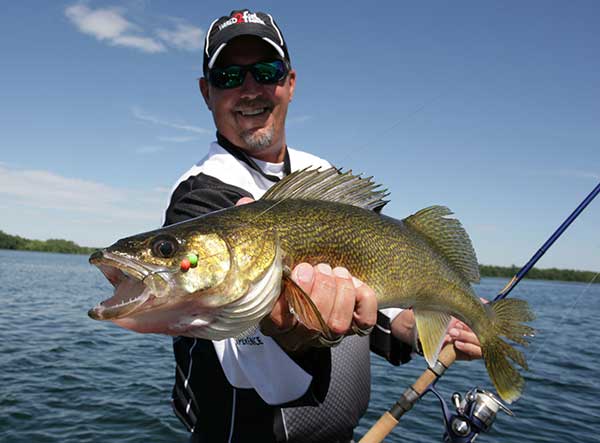- Details
(Provided by All Creations Media)
 Catch more walleyes by choosing the right colored fishing line.
Catch more walleyes by choosing the right colored fishing line.
There are many ways to tip the odds in your favor when you're angling for the next big catch. One of the easiest, least expensive and most effective is by spooling up with line that's a perfect fit for the conditions at hand.
After all, line plays a key role in many facets of fishing, from the presentation phase to strike detection, hook-setting and fighting fish.
Many anglers make this connection and work hard to choose lines with the right blend of strength, abrasion resistance, size and handling characteristics. But veteran fishing guides and decorated touring pros Scott and Marty Glorvigen maintain that few fishermen pay full attention to one of the most critical aspects of line selection-the color factor.
"People tend to forget about using line color as a tool to catch more fish in different situations," says Scott. "But choosing the right color can be key to success."
Take spring walleye fishing on rivers, for example.
"Colored line that's easy to see is a godsend when vertical jigging early season walleyes," says Marty. "You can tell whether the bait is directly below the rodtip, which is where you want it for optimum control and to avoid snags as much as possible. If the line is perpendicular to the surface, you're fine. But if it runs up- or downstream, you need to adjust your boat speed or jig weight."
- Details
(Provided by IDNR)
The Indian DNR stocked another 25,000 walleye fingerlings in Kokomo Reservoir in May, marking the 20th year that walleyes have been released into the 484-acre Howard County impoundment.
The walleyes averaged 1.5 inches long and were produced at the Cikana State Fish Hatchery near Martinsville.
Walleyes are popular among Hoosier anglers and are stocked in Kokomo Reservoir to provide walleye fishing opportunities in central Indiana.
Sampling by DNR fisheries biologists has shown that walleye survival is good at Kokomo Reservoir.
- Details
(By Chip Leer)
 Casting for Walleyes
Casting for Walleyes
In the early weeks of the open-water walleye season, post-spawn fish disperse onto flats and along breaklines, where they put the feedbag on before heading off to their summer haunts.
Baitfish are at a low point in abundance for the year, so hungry eyes often gorge on a variety of insect life and anything else they can scrounge up off bottom.
With the fish looking down for food, a jig tipped with a nightcrawler, minnow or artificial softbait like Northland Fishing Tackles IMPULSE Smelt Minnow is a deadly presentation.
 Swivel Head CrawlerNorthlands new Swivel-Head Jig is especially hard to beat. Borrowing from bass fishings swing-head craze, it uses a barrel swivel to couple a flat-bottom football head with a size 2 Crawler Hauler VMC hook.
Swivel Head CrawlerNorthlands new Swivel-Head Jig is especially hard to beat. Borrowing from bass fishings swing-head craze, it uses a barrel swivel to couple a flat-bottom football head with a size 2 Crawler Hauler VMC hook.
- Details
(Provided by All Creation Media)
 Get Loud, Catch More Walleyes
Get Loud, Catch More Walleyes
Anglers across the Walleye Belt keep commotion to a minimum to avoid spooking skittish walleyes. But there are times when silence isn't so golden. In fact, making a little noise can often help you catch more fish, year-round.
"We've been taught that stealth is critical to success, but there are many situations where using sound to attract walleyes can increase your catch rates," says veteran guide and tournament champion Scott Glorvigen.
To be clear, he doesn't advocate creating a clamor of cataclysmic proportions. "Dropping an anchor on the bottom of an aluminum boat isn't going to make the walleyes come charging in," he laughs. "But the judicious use of rattles inside spoons, crankbaits and other presentations can call fish from a distance."





